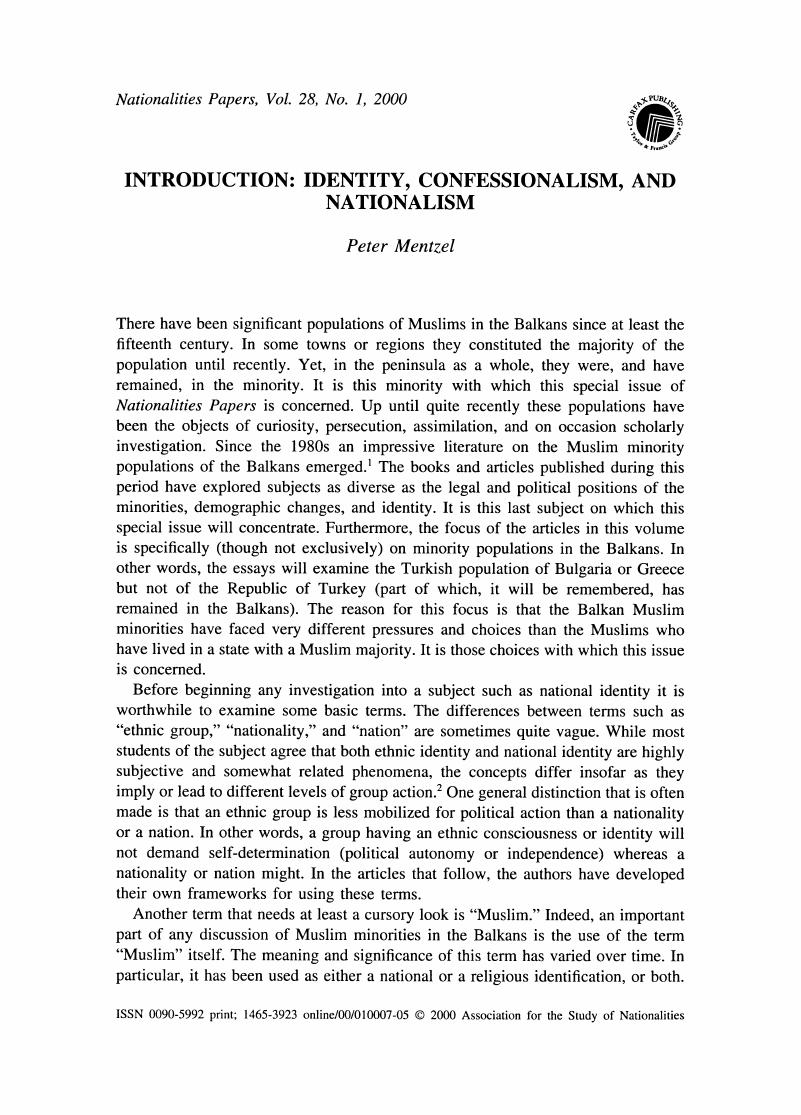Article contents
Introduction: Identity, Confessionalism, and Nationalism
Published online by Cambridge University Press: 20 November 2018
Abstract

- Type
- Introduction
- Information
- Copyright
- Copyright © 2000 Association for the Study of Nationalities
References
Notes
1. See for example, H. T. Norris, Islam in the Balkans: Religion and Society between Europe and the Arab World (Columbia, SC: University of South Carolina Press, 1993); Hugh Poulton, The Balkans: Minorities and States in Conflict (London: MRG, 1993); Hugh Poulton and S. Taji-Farouki (eds), Muslim Identity and the Balkan State (London: Hurst, 1997).Google Scholar
2. There is an immense literature on ethnic and national identities. On the differences between them see especially Paul R. Brass, “Ethnic Groups and Nationalities,” in Peter F. Sugar (ed.), Ethnic Diversity and Conflict in Eastern Europe (Santa Barbara: ABC-Clio, 1980).Google Scholar
3. Interestingly, Greece uses a similar sort of calculus for its citizens. It does not recognize any ethnic minorities, only religious ones.Google Scholar
4. See, for example, Marshall G. S. Hodgson, The Venture of Islam: Conscience and History in a World Civilization, Vol. 3 (Chicago: University of Chicago Press, 1974), pp. 239, 276–281; Kemal Karpat, An Inquiry into the Social Foundations of Nationalism in the Ottoman State: From Social Estates to Classes, From Millets to Nations (Princeton: Center of International Studies, 1973), pp. 97–116; David Kushner, The Rise of Turkish Nationalism, 1876–1908.Google Scholar
5. This taxonomy of minorities is based on Charles Z. Jokay, “Nationality/Ethnic Settlement Patterns and Political Behavior in East Central Europe,” Nationalities Papers, Vol. 24, No. 3, pp. 380–381, 1996.Google Scholar
- 4
- Cited by


